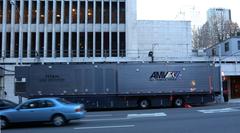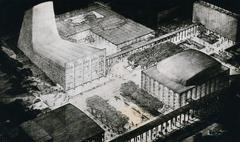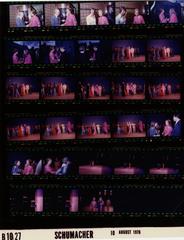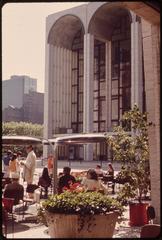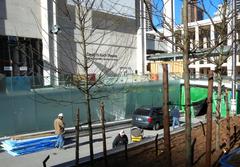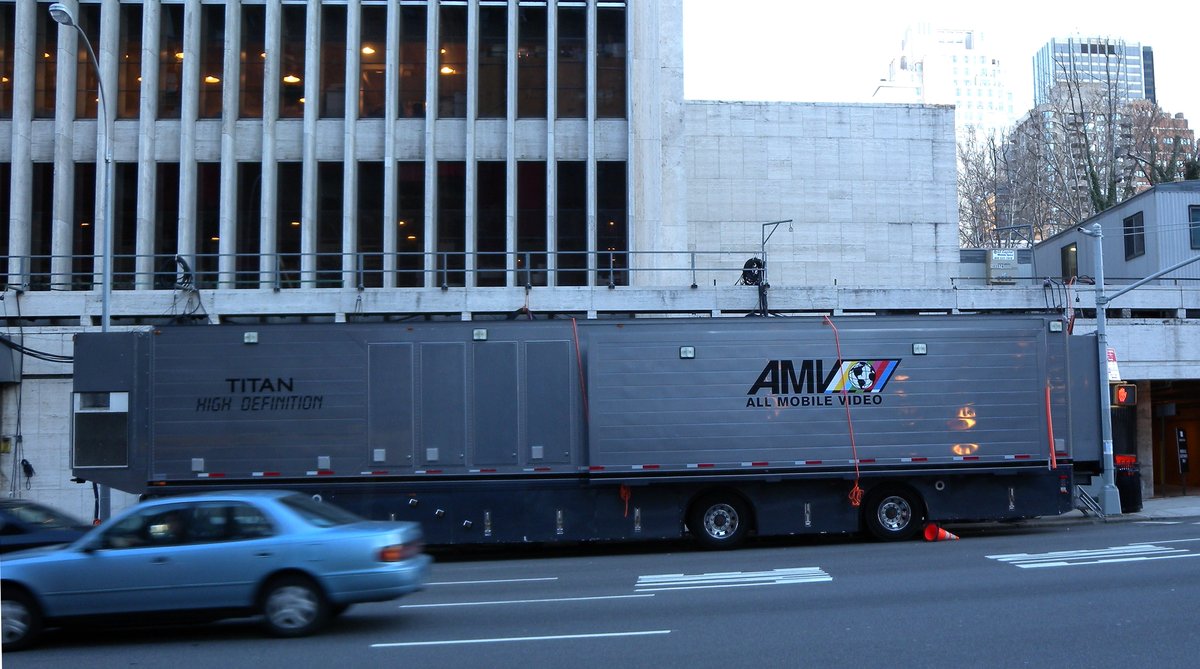
Lincoln Center For The Performing Arts
Lincoln Center for the Performing Arts: Visiting Hours, Tickets & Visitor Guide
Date: 14/06/2025
Introduction: Legacy, Culture, and the Visitor Experience
Lincoln Center for the Performing Arts is a monumental cultural institution in the heart of Manhattan, New York City. Drawing nearly five million visitors annually, it stands as a beacon for classical music, opera, ballet, theater, film, and architectural innovation. Established in the mid-20th century as part of a visionary urban renewal project, Lincoln Center unites premier performing arts organizations within a modernist campus that continues to shape New York’s cultural identity (Lincoln Center Visiting Hours, Tickets & History, Architecture Lab).
This comprehensive visitor guide covers everything you need to plan an enriching visit: visiting hours, ticketing options, accessibility, guided tours, and practical travel tips. You’ll also find insights into Lincoln Center’s rich history, its iconic venues—including the Metropolitan Opera House, David Geffen Hall, and David H. Koch Theater—and its community engagement through seasonal festivals and educational outreach. Whether you’re an arts aficionado or a first-time visitor, Lincoln Center promises a memorable and accessible experience at the heart of New York’s performing arts scene (Lincoln Center Visiting Hours, Tickets, and Architectural Highlights, Visiting Lincoln Center: A Complete Guide).
Table of Contents
- Introduction
- Visiting Lincoln Center: Hours, Tickets & Tours
- Accessibility Information
- Directions & Nearby Attractions
- Historical Overview
- Resident Organizations
- Major Venues
- Unique Visitor Experiences
- Architectural Highlights
- Special Events & Tours
- Best Photo Spots
- Community Engagement
- Accessibility, Equity & Inclusion
- Educational Outreach
- Economic Impact
- Philanthropy & Sustainability
- Visual and Virtual Resources
- FAQ
- Plan Your Visit
- Stay Connected
- Summary
- References
Visiting Lincoln Center: Hours, Tickets & Tours
Visiting Hours
- Public Spaces: Open daily, typically from 9:00 AM to 10:00 PM; Josie Robertson Plaza and outdoor areas often accessible from 6:00 AM to 11:00 PM.
- Venues: Each performance hall (Metropolitan Opera House, David Geffen Hall, David H. Koch Theater, etc.) maintains its own hours based on scheduled events. Always confirm on the official website before visiting.
Ticketing
- Tickets can be purchased online through the Lincoln Center box office or directly from resident organizations.
- Pricing varies by event and venue; discounts are often available for students and seniors.
- For popular performances, advance purchase is recommended.
- The David Rubenstein Atrium hosts a TKTS booth with discounted same-day tickets.
Guided Tours
- Guided tours provide exclusive access to behind-the-scenes spaces, architectural details, and the history of Lincoln Center.
- Tours generally last around 90 minutes and must be booked in advance via the official website.
- Tours are available for all age groups and may be tailored to specific interests (Lincoln Center Tours).
Accessibility Information
- Lincoln Center is fully wheelchair accessible, with designated entrances, seating, and restrooms.
- Assistive listening devices, sign language interpretation, and audio description are available upon request.
- Service animals are welcome throughout the campus.
- Programs like “Lincoln Center Moments” and “Passport to the Arts” are designed for guests with dementia or disabilities (Accessibility Information).
Directions & Nearby Attractions
- Address: 10 Lincoln Center Plaza, between West 62nd and West 66th Streets, west of Broadway, Manhattan.
- Subway: 66th Street–Lincoln Center station (1 train), or A, B, C, D lines nearby.
- Bus: Multiple routes serve the area.
- Parking: Public parking is limited; public transportation is recommended.
- Nearby: Central Park, American Museum of Natural History, Museum of Arts and Design, Columbus Circle.
Historical Overview
Origins and Urban Renewal
Lincoln Center emerged from a 1950s urban renewal initiative led by John D. Rockefeller III and urban planner Robert Moses. The project sought to centralize New York’s leading arts institutions. The site, historically San Juan Hill, was a culturally rich, working-class neighborhood, home to Afro-Caribbean and American musical traditions. Its redevelopment led to the displacement of thousands of residents, a legacy Lincoln Center acknowledges today.
Planning and Construction
Construction began in 1959 with President Dwight D. Eisenhower breaking ground. The 16.3-acre campus brought together renowned architects—Wallace Harrison, Max Abramovitz, Philip Johnson, Pietro Belluschi, and Eero Saarinen. Landmark venues include David Geffen Hall (1962), David H. Koch Theater (1964), and the Metropolitan Opera House (1966).
Architectural and Cultural Significance
Lincoln Center’s modernist architecture, characterized by Italian travertine marble, glass facades, and grand plazas, broke new ground for performing arts centers globally. The design unified twelve major arts organizations on one campus, including the New York Philharmonic, Metropolitan Opera, New York City Ballet, Juilliard School, and Jazz at Lincoln Center (Architecture Lab).
Expansion and Renovation
The campus has expanded with new buildings and renovations, including the Juilliard School (1969), Lincoln Center Theater (1985), Jazz at Lincoln Center’s Frederick P. Rose Hall (2004), and redevelopments along 65th Street. Recent efforts focus on accessibility, sustainability, and enhanced visitor experience.
Honoring San Juan Hill
Lincoln Center recognizes the significance of the San Juan Hill neighborhood through initiatives like the “Legacies of San Juan Hill” digital hub and educational programs, fostering ongoing dialogue about the area’s cultural heritage.
Resident Organizations
Lincoln Center is home to eleven world-class resident organizations:
- New York Philharmonic (David Geffen Hall)
- Metropolitan Opera (Metropolitan Opera House)
- New York City Ballet (David H. Koch Theater)
- Juilliard School
- Lincoln Center Theater (Vivian Beaumont and Mitzi E. Newhouse Theaters)
- Chamber Music Society of Lincoln Center
- Jazz at Lincoln Center (Frederick P. Rose Hall)
- Film at Lincoln Center (Walter Reade Theater)
- School of American Ballet
- New York Public Library for the Performing Arts
- Lincoln Center for the Performing Arts, Inc. (campus management)
Each organization offers unique programming, from orchestral concerts and grand opera to innovative theater, ballet, jazz, film, and world-class arts education.
Major Venues
- David Geffen Hall: Home of the New York Philharmonic; renowned for its acoustics and modern glass-walled lobby.
- Metropolitan Opera House: Iconic arches, nearly 4,000 seats, and dazzling chandeliers.
- David H. Koch Theater: Renowned for dance, home to the New York City Ballet.
- Alice Tully Hall: Celebrated for chamber music and film screenings.
- Vivian Beaumont Theater: Broadway-class with a unique thrust stage.
- Walter Reade Theater: Premier film screenings and festivals.
- Frederick P. Rose Hall: Jazz at Lincoln Center’s multi-venue home.
- David Rubenstein Atrium: Free performances, TKTS booth, and public gathering space.
- Outdoor Spaces: Josie Robertson Plaza, Hearst Plaza, Tisch Illumination Lawn, and Damrosch Park for open-air events.
Unique Visitor Experiences
- “Summer for the City” Festival: Free outdoor events, concerts, and dance gatherings in the central plaza.
- Outdoor Performances: Enjoy live music and films in Damrosch Park (summer months).
- Dining & Shopping: Cafés and shops on and near the campus.
- Photography: The central fountain, the steps of the Metropolitan Opera House, and plaza at dusk provide iconic photo opportunities.
Architectural Highlights
Vision and Design
The campus was envisioned as the world’s first modern performing arts hub, transforming Manhattan’s Upper West Side. The site’s architecture features monumental forms, clean lines, and unifying travertine marble.
Key Architectural Features
- Metropolitan Opera House: Five grand arches and state-of-the-art stage technology.
- David Geffen Hall: Sweeping glass lobby and renowned acoustics.
- Koch Theater: Grand staircase and European-inspired auditorium.
- Alice Tully Hall: Modern glass façade and enhanced acoustics.
- Vivian Beaumont Theater: Intimate thrust stage by Saarinen.
Landscape and Lighting
Josie Robertson Plaza, with the Charles H. Revson Fountain, is the visual and social core. Tree-lined walkways, open lawns, and public art create an inviting campus, especially at night when architectural lighting accentuates each building.
Special Events & Tours
Lincoln Center hosts thousands of performances annually, including opera, ballet, concerts, film festivals, and educational events. Guided tours reveal the campus’s architectural and artistic secrets. Many events are free or choose-what-you-pay, especially during festivals (Lincoln Center Out of Doors).
Best Photo Spots
- Josie Robertson Plaza and fountain
- Steps of the Metropolitan Opera House
- David Rubenstein Atrium’s vertical gardens
- Campus walkways at dusk, when the buildings are illuminated
Community Engagement
Lincoln Center serves as a civic anchor, hosting community events like blood drives, graduations, and polling stations. Festivals such as “Summer for the City” attracted over 300,000 attendees in 2024, exemplifying the Center’s commitment to public engagement (pressroom.lincolncenter.org).
Accessibility, Equity & Inclusion
Lincoln Center champions accessibility and inclusion, offering programs for individuals with disabilities (e.g., “Lincoln Center Moments,” “Passport to the Arts”). Many events are free or low-cost, and the campus is designed for universal access. The Center celebrates cultural heritage months and LGBTQIA+ Pride, reflecting New York’s diversity (lincolncenter.org).
Educational Outreach
Through The Juilliard School and in-house initiatives, Lincoln Center offers workshops, masterclasses, student performances, and family events. Fellowships and residencies nurture new talent, while educational tours demystify the performing arts for all ages (Lincoln Center Tours).
Economic Impact
Lincoln Center’s presence has revitalized the Upper West Side, attracting business, tourism, and residential development. Its success has inspired similar cultural projects citywide (architecturelab.net).
Philanthropy & Sustainability
Lincoln Center thrives on support from major foundations, corporate partners, and individual donors, complemented by public funding from New York City and State. The institution prioritizes sustainability, integrating green practices into campus management (pressroom.lincolncenter.org, lincolncenter.org).
Visual and Virtual Resources
Explore Lincoln Center through virtual tours, online galleries, and multimedia archives. Optimized images with descriptive alt text make the digital experience accessible to all.
Frequently Asked Questions (FAQ)
What are Lincoln Center’s public hours?
Most public spaces are open daily from 9:00 AM to 10:00 PM; check the website for venue-specific schedules.
How do I buy tickets?
Purchase tickets online at tickets.lincolncenter.org or at individual box offices. Advance booking is advised.
Is there wheelchair access?
Yes, all venues are accessible, with assistive services available.
Are guided tours available?
Yes, book in advance for behind-the-scenes and architectural tours.
Are there free events?
Many outdoor events and festivals are free or choose-what-you-pay.
Can I visit the campus without a ticket?
Absolutely, public plazas and outdoor spaces are open to everyone.
Plan Your Visit
For up-to-date information on hours, events, and accessibility, visit the official Lincoln Center website. Use the site’s virtual tours and interactive maps to plan your experience. Download the Audiala app for personalized recommendations, ticket alerts, and exclusive visitor content.
Summary and Final Tips
Lincoln Center for the Performing Arts encapsulates New York City’s dedication to culture and community. From iconic architecture and world-class performances to inclusive programming and neighborhood impact, a visit to Lincoln Center is a journey into the heart of the city’s artistic life. Plan ahead, explore nearby attractions, and immerse yourself in one of the world’s leading performing arts destinations.
References
- This guide was informed by the following resources:
For more tips, event updates, and exclusive content, download the Audiala app and follow Lincoln Center on social media. Enjoy your visit!
